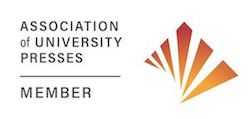The Letters of Matthew Arnold
Matthew Arnold. Edited by Cecil Y. Lang
- Summary
- Reviews
- Author Bio(s)
The University Press of Virginia edition of The Letters of Matthew Arnold, edited by Cecil Y. Lang, represents the most comprehensive and assiduously annotated collection of Arnold's correspondence available. When complete in six volumes, this edition will include close to four thousand letters, nearly five times the number in G.W.E. Russell's two-volume compilation of 1895. The letters, at once meaty and delightful, appear with a consecutiveness rare in such editions, and they contain a great deal of new information, both personal (sometimes intimate) and professional. Two new diaries are included, a handful of letters to Matthew Arnold, and many of his own that will appear in their entirety here for the first time. Renowned as a poet and critic, Arnold will be celebrated now as a letter writer. Nowhere else is Arnold's appreciation of life and literature so extravagantly evident as in his correspondence. His letters amplify the dark vision of his own verse, as well as the moral background of his criticism. As Cecil Lang writes, the letters "may well be the finest portrait of an age and of a person, representing the main movements of mind and of events of nearly half a century and at the same time revealing the intimate life of the participant-observer, in any collection of letters in the nineteenth century, possibly in existence."
In this penultimate volume of the Virginia edition of Matthew Arnold's letters, we see Arnold at his best. This period saw publication of Mixed Essays, Irish Essays, and Discourses in America as well as of several essays gathered later in Essays in Criticism, Second Series. The Poems of Wordsworth and The Poetry of Byron appeared, as did the controversial essay "The Study of Poetry," with its notorious and very readable touchstone theory.
The emotional and moral center of the volume, however, is the extraordinary series of letters written during Arnold's first American visit, during which he ranged from New York and New England to Madison, Chicago, Richmond, Washington, Toronto, Montreal, and Quebec. Like most visiting British luminaries, he meets everyone everywhere, including the president and former president, the Delanos, the Roosevelts, the Vanderbilts, and, especially, Andrew Carnegie. But the visit—a lecture tour undertaken to pay off his son's debts—had other and far more significant repercussions, for Arnold was accompanied by his wife and by his elder daughter, who met the man she was to marry—the direct cause of a second American visit and, in due course, of a flourishing branch of Arnold descendants in the United States.
- Summary
- Reviews
- Author Bio(s)
The University Press of Virginia edition of The Letters of Matthew Arnold, edited by Cecil Y. Lang, represents the most comprehensive and assiduously annotated collection of Arnold's correspondence available. When complete in six volumes, this edition will include close to four thousand letters, nearly five times the number in G.W.E. Russell's two-volume compilation of 1895. The letters, at once meaty and delightful, appear with a consecutiveness rare in such editions, and they contain a great deal of new information, both personal (sometimes intimate) and professional. Two new diaries are included, a handful of letters to Matthew Arnold, and many of his own that will appear in their entirety here for the first time. Renowned as a poet and critic, Arnold will be celebrated now as a letter writer. Nowhere else is Arnold's appreciation of life and literature so extravagantly evident as in his correspondence. His letters amplify the dark vision of his own verse, as well as the moral background of his criticism. As Cecil Lang writes, the letters "may well be the finest portrait of an age and of a person, representing the main movements of mind and of events of nearly half a century and at the same time revealing the intimate life of the participant-observer, in any collection of letters in the nineteenth century, possibly in existence."
In this penultimate volume of the Virginia edition of Matthew Arnold's letters, we see Arnold at his best. This period saw publication of Mixed Essays, Irish Essays, and Discourses in America as well as of several essays gathered later in Essays in Criticism, Second Series. The Poems of Wordsworth and The Poetry of Byron appeared, as did the controversial essay "The Study of Poetry," with its notorious and very readable touchstone theory.
The emotional and moral center of the volume, however, is the extraordinary series of letters written during Arnold's first American visit, during which he ranged from New York and New England to Madison, Chicago, Richmond, Washington, Toronto, Montreal, and Quebec. Like most visiting British luminaries, he meets everyone everywhere, including the president and former president, the Delanos, the Roosevelts, the Vanderbilts, and, especially, Andrew Carnegie. But the visit—a lecture tour undertaken to pay off his son's debts—had other and far more significant repercussions, for Arnold was accompanied by his wife and by his elder daughter, who met the man she was to marry—the direct cause of a second American visit and, in due course, of a flourishing branch of Arnold descendants in the United States.
QuickLinks
Find a BookFor Our AuthorsRights and PermissionsRotunda Digital ImprintSupport UVA PressCareer OpportunitiesWalker Cowen Memorial PrizePrivacy PolicyContact Us
- P.O. Box 400318 (Postal)
- Charlottesville, VA 22904-4318
- 210 Sprigg Lane (Courier)
- Charlottesville, VA 22903-2417
- 434 924-3468 (main)
- 1-800-831-3406 (toll-free)
- 434 982-2655 (fax)

the future
of publishing
Affiliates



